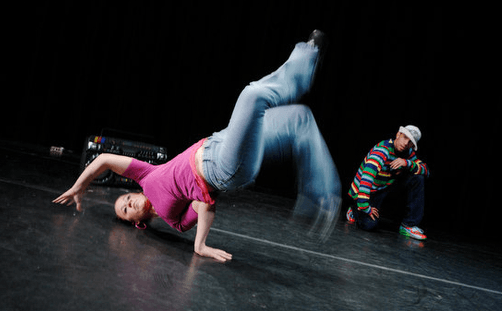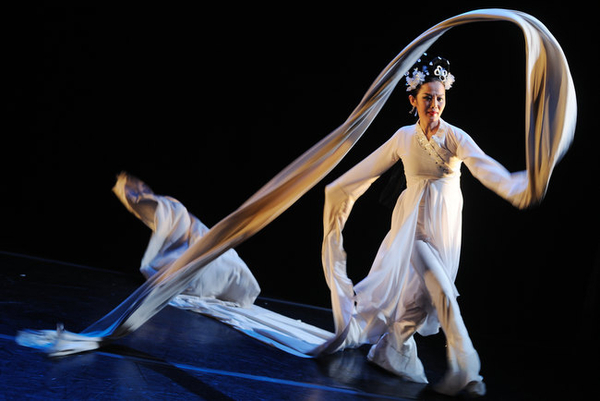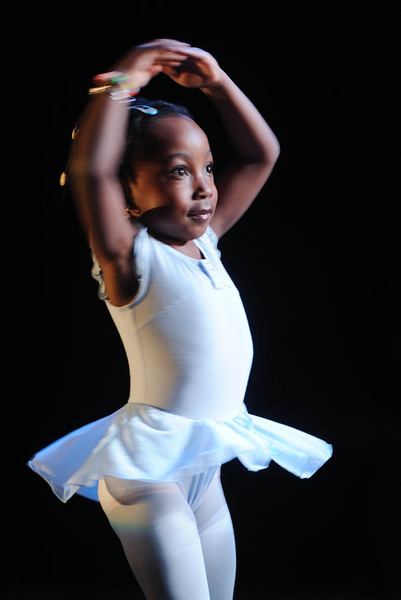Share
Using Kickstarter to Photograph How Philly Moves
JJ Tiziou is the professional photographer and creator of How Philly Moves, a community-driven project to share people’s love of dance. The proje...


JJ Tiziou is the professional photographer and creator of How Philly Moves, a community-driven project to share people’s love of dance. The project is a prime example of a successfully crowdfunded project using Kickstarter, the online platform for funding creative projects worldwide. JJ met his goal by raising $26,270 – his Kickstarter campaign closed on March 27, 2011. We talked with JJ to learn more about dancing in Philly and how he used Kickstarter to help make it all happen.
What was the motivation behind How Philly Moves and how did it originally get started?
I’ve photographed a lot of dance, both in the Philadelphia performing arts community, and while ‘playing’ wedding photographer for my friends. I love dance–the movement, energy, how universal it is- and the idea that everyone is photogenic is one that people always respond to. In 2008 I came up with idea of holding photo sessions and inviting community members to dance however they pleased, hoping to generate imagery for a public art commission for a subway station here in Philly. I was a finalist for the commission, but didn’t end up getting it. But the community responded so powerfully to the project that I continued it on my own, self-producing another round of community photo sessions. There was only so much that I could do on my own without external support, but luckily the project was selected for a different commission by the city’s Mural Arts Program, which led to one of the largest murals in the world at the Philadelphia International Airport and also a month-long projection project during the Philadelphia International Festival of the Arts.
So at that point did you decide to turn to Kickstarter?
When I put out the last call for participants in How Philly Moves, I got over 450 responses for the 60 available slots in the span of just two weeks. Each and every one of them was perfect for the project, but time and budget constraints meant that I couldn’t include all of them. Even after those photo sessions, I still kept getting calls from people who wanted to participate. From the beginning, the idea was for How Philly Moves to be a continuing series, with photo sessions all over the city, but that takes resources.
I’ve long had an interest in making work that supports my community in a community supported way. As media makers, we have not just an opportunity, but a responsibility to promote positive social change by creating and sharing images that will celebrate and inspire our communities, because media amplifies power. Our challenge is that, as humans and family members, we need to sustain ourselves and thrive so that we can continue to create those images, and that means covering costs and being paid for our work. Ever since I started soliciting PayPal micropayments in 2003, I’ve been looking for ways to make it easier for the people that value my work to invest in it. It’s only recently that tools like Kickstarter have become available. I hope to continue to use these resources to help create alternative imagery that may not be valued by the mainstream media market, but is valued by our communities.
What was it like to crowdfund your campaign?
It was amazing to be able to draw support directly from an audience and being able to say, here’s a project that I’m going to do as an artist because I think it’s important, not because an editor assigned it to me or a client hired me, but because I want to do it. At the same time, it’s a lot of work. Some people think Kickstarter is a magic pool of money, but it’s not a free ATM. It’s just a tool that lets you reach your community, which means that you need to have a project that people want to invest in.
Was there uncertainty about whether or not the campaign would reach its goal?
At first, I wasn’t sure that we were going to meet it. It was only in the last few days that it went from $10K to its $25K goal. And with Kickstarter, if you don’t reach your goal, then you don’t get any of the money. I feel like the critical times were the first couple of days and the last couple days of the campaign.
How did you promote the campaign?
I reached out a lot to my friends and some press contacts. It’s a ‘two degrees of separation’ thing–my supporters are connected with some key people and shared the project with their network, and it goes from there. I relied a lot on my email lists and Facebook. I also did a series of updates on Kickstarter to include some of the dancers’ images and their stories, and that seemed to catalyze excitement around the project.
Photo by JJ Tiziou
How did you decide on the incentives for backers?
There are a lot of logistics to consider here. Part of it was trying to think what price points would be accessible and make sense for people, and part of it was trying to think about what would be a good set of rewards. You definitely have to anticipate how much work things are going to be, and you have to be careful what you promise: if 1,000 people ask you for this thing, are you going to be able to deliver? A digital photo download is no problem, but you have to leave an extra chunk of time for physical things. I made a full set of greeting cards, and those ended up being beautiful but pretty labor intensive to assemble. As only a handful of people reached that price point, it might have made more sense to make simpler gifts.
What were the keys to success in hitting your goal?
The biggest thing was having a solid, proven project and a lot of pre-existing community connections that were invested in the work. It certainly didn’t hurt that Kickstarter actually wrote about the project on their blog, and featured it twice on their homepage.

Photo by JJ Tiziou
Do you have tips for other photographers looking to crowdsource their campaign?
As a photographer, you’re already a small business owner. The crowdfunding model means also acting like a nonprofit administrator. There’s basically a whole other set of fundraising and community development skills that photographers aren’t usually trained in. And it’s important to be realistic in what’s achievable in your community and network. This is different than trying to get financed by a client to do a commercial project… it’s a lot simpler to cultivate a personal relationship with that one person who has a bigger budget than it is to communicate with a large group of people who have much smaller budgets.
Artists that are really invested in their work can tend to spread themselves too thin. We can make a $20,000 project happen on a $5,000 budget by not paying ourselves a decent wage for our own time, but that path leads to burnout. Be realistic about budgeting for what your work really costs, and plan a project with a reasonable scope.
If your project gets funded, remember to value the investment that people are making in your project. The internet is not your magic-ATM–remember that you’re getting real support from real people in your community and be grateful for it. So to everyone who’s out there supporting my work – huge thanks!

Photo by JJ Tiziou
To learn more about crowdfunding to support your passion, download our recent free guide Crowdfunding Your Photo Project.
Next Post: Friday Happy Hour: Farms, Oreos and Facebook
Previous Post: 5 Pimped-Out Photographer Facebook Pages


